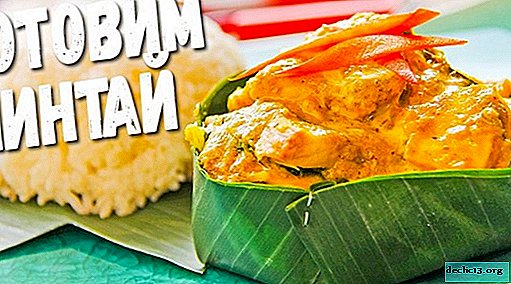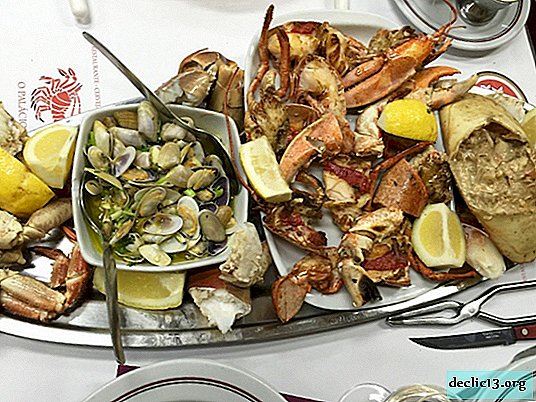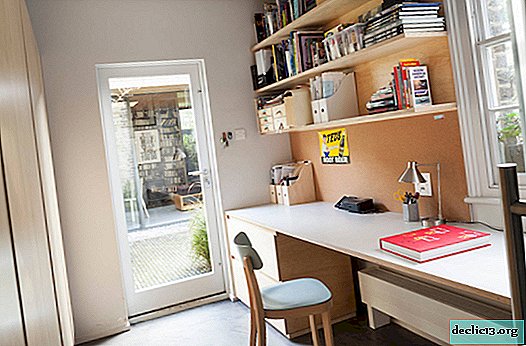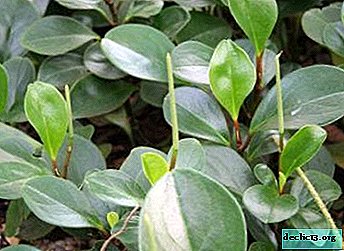Bright beauty cymbidium orchid - in detail about the plant and its care features
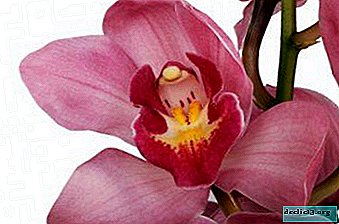
Orchid Cymbidium is one of the most beautiful and exquisite orchids. The most persistent among her sisters and quite grateful.
It can bloom often by releasing additional arrows. It is only necessary to learn how to properly care, fertilize, protect in time from the danger of pests and viruses. And then the magnificent Cymbidium is at your service!
Learn more about this amazing and beautiful flower, its varieties and care features in our article.
What is this plant?
Orchid cymbidium is a terrestrial orchid, belongs to the genus of evergreen epiphytes of the orchid family. Homeland - Alpine regions of the Himalayas, Northern Australia, subtropics of Asia.
Detailed description of appearance
- Leaves may be pointed or blunt.
- Inflorescences are straight, and sometimes grow at an angle, as if hanging down, resemble brushes.
- Peduncle is long, sometimes grows up to one and a half meters.
- The flowers themselves are large and small, of different colors - red, pink, white, yellow, cream, even green colors and their shades will be enjoyed by the most spoiled and demanding lover of beautiful orchids.
- Cymbidium has an unusual lip - it is three-dimensional, convex, so motley and bright that the whole flower turns into a bright constellation.
History of occurrence
The first mention of Cymbidium appeared 2000 years ago in China. And until now, the natural primordial forms of this orchid have been successfully cultivated in Asian countries. Small species are especially appreciated. They are bred in special tall painted flowerpots.
In the 14th century, in Japan, scientists first classified this orchid, dividing it into species and forms. In the 17th century, Cymbidium became very popular among the noble population of Asia. Today, hybrids of this ancient genus are loved and bred throughout Europe.
Specific features
Cymbidium - an orchid - an aristocrat, making it bloom in a pot at home is not easy, you need to try to please her, providing special care. Unlike their sisters, this orchid does not tolerate heat and direct sun at all, it needs enhanced watering, heavy soil that traps moisture.
Reference! For flowering, you need a temperature difference - night and day. In winter, the orchid must be kept in a cool room with high humidity. Only then will our shy show her beautiful flowers.Names of subsorts and their photos
There are a great many hybrids and varieties of Cymbidium, it is impossible to tell everything about them within the framework of the article, so we want to briefly describe and show you the most common sub-varieties among gardeners.
Aloe
Compared to its relatives, this orchid is small, grows up to 30 cm. Flowers are only 4.5 cm in diameter. But then, how colorful they are, similar to exotic beetles with wings of burgundy - cream shade. Lip - tongue looks like a summer bumblebee with yellow stripes on its back. This unusual combination is striking and pleasing to the eye.

Eburneum
Another name is Ivory. The space of tenderness and style. Large creamy petals are elegantly arranged and give a delicate aroma of lilac.

Tracy
These are such funny octopuses, yellow-green, with reddish veins. The flowers are large enough, up to 12 cm. Lip - cream-colored fringe with bright stripes and spots. The brush is long, grows up to 1 meter, and sometimes more. Up to 20 flowers sit perfectly on it. May bloom in the fall.

Bloom
When and how does it happen?
Peduncles Cymbidium appear by August. So that they grow directly, do not break due to the weight of the flowers, the orchid needs special support. In the open air, it is better to keep the orchid until the temperature drops to 12 ° C at night. As soon as the buds begin to open, you can move the flowers into the room.
The orchid blooms luxuriously, generously - up to 30 flowers, and quite long - about 2 months. From flower stalks a beautiful bouquet is obtained, they are cut to the very root, and they will stand in the water for a long time.
How to help the plant at this time?
Orchid blooms in winter, so take care of lighting before flowering. In autumn, daylight becomes less, so the orchid needs additional illumination with a phytolamp, otherwise you will not wait for the joy of flowering.
After flowering, watering is usually reduced to 1 time in 2 weeks, but you need to make sure that the substrate does not dry out, and the bulbs do not wrinkle. At this time, the flower is not fertilized, we give rest for about a month.
Important! If there are no shoots, and your flower does not produce peduncles, then the temperature difference between day and night is violated. It must be 5 -6 ° C. In winter, avoid the influence of heating appliances - this dries the air, lowers humidity, and inhibits flowering. In the summer, so that the flower does not suffocate, often spray it.Detailed instructions on how to care
Consider the features of home care for this fragile flower.
Seat selection
It is best to settle Cymbidium on a windowsill with great access to light, but you need to protect it from direct sunlight, especially when it blooms. Can be used for shade blinds or curtains.
Experienced orchid collectors in the hot season, until the fall, exhibit flowers in the open air - in the garden, in the greenhouse, greenhouse or on the balcony, the main thing is that the sun does not fall, does not burn a delicate orchid.
Soil and pot preparation
 Which pots to plant in is a fundamentally important question. The pot should be small in size to the root.
Which pots to plant in is a fundamentally important question. The pot should be small in size to the root.
The roots of this orchid are quite powerful and long, so they transplant it into special pots - vases. In ordinary pots, growth and flowering slows down.
Composition and ratio of parts of the soil for Cymbidium:
- Small pieces of coniferous bark, the soil should be acidic - 3 hours.
- Moss - Sphagnum - 2 hours
- Humus leaves - 1 h.
- Sand - 1h.
- Charcoal - 1h.
- Perlite, to contain moisture - 1h.
If you are a novice collector, it is best to purchase the necessary substrate in the store with the mark: "For cymbidium."
Temperature
- In winter, the temperature should be 10 - 15 ° C. Do not put on the windowsill when heating is turned on, the flower will simply wither. It is better to transfer to a closed loggia, terrace, cool room. Do not dry the air.
- Summer temperature should not exceed 25 - 29 ° C during the day and 10 - 15 ° C at night
- At the very beginning of June, flower stalks ripen, the difference in temperature at night and day is important here.
- From September to early March during the day, the temperature should be from 18 to 25 ° C during the day and not fall below 8 ° C at night.
Humidity
Our Asian prima donna is very likes cool, light, fresh air, humidity should not be lower than 50%. She feels more comfortable at 75 - 90%
Lighting
In winter, as a rule, sunlight is not enough for people, birds, and the entire living "population" of the planet. Orchid is no exception. From October to March, there is little light for her, so move the pot to the south, there will be brighter lighting. As soon as the spring sun warms up, remove it in more shaded places - east or west windows.
Attention: we protect our capricious from direct burning sun.Light must be diffused. And if your pet’s leaves are golden green, it means that it has enough light and heat. If the leaves have darkened, transfer it to a brighter place.
Watering
In winter, at the desired temperature of up to 15 ° C, orchid is watered no more than 1 time in 14-15 days. If the temperature is higher, and the air is drier than the permissible norms, we increase watering. In the summer, on an open surface, watering provides rain. If the summer is dry, then you need to water it once a week. You can increase air humidity by spraying.
Top dressing
It is better to fertilize at the same time as watering, so the fertilizer will evenly fall into the soil. We feed from the beginning of spring until flowering with a frequency of every 2 or 3 irrigation, not more often. During and after flowering, the orchid does not need to be fertilized.
Transfer
It is better to transplant an orchid after flowering, not more than 1 time in 3 years, preferably at the end of summer.
A transplant is usually combined with reproduction. Care and care are required so as not to damage the roots.
The procedure itself is simple, follow the sequence:
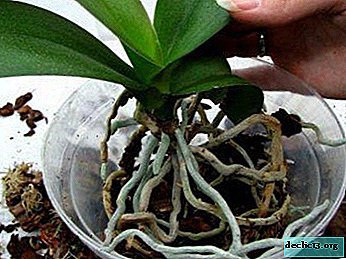 We extract the orchid from the pot.
We extract the orchid from the pot.- Usually old and young roots grow together in one dense ball.
- The bottom of the dry old gray roots must be cut off with a clean knife.
- We clear the whole earthen lump to young green roots.
- Carefully clean the roots of the old soil.
- Divide the root into parts.
- We transplant each updated part - a green bulb with kidneys and peeled roots into new separate containers.
- You can transplant several of these parts into one spacious pot.
- Foam can be used as drainage.
How to care so that a flower appears from the arrow?
To successfully lay the flower buds, you need to feed the orchid potassium in the summer, but it is better to reduce the proportion of nitrogen to a minimum, it inhibits the development.
Advice! In order for a flower to appear from the flower arrow, you need to put the pot in a cool bright place -16 - 20 ° C, and at night lower the temperature to 18 ° C. Under these conditions, re-flowering orchids will not be a problem.How to propagate?
Each green bulb, usually has 2 "babies" per year, An orchid of this species grows rapidly and multiplies very easily and quickly.
Signs of the need for transplantation: in the center of the pot bulbs are dry, brown, greens and roots are very dense, resemble thickets, closely orchid.
We follow the rules when reproducing Cymbidium:
- We divide the root into parts so that each has 2 green bulbs and one old, brown one.
- The old bulb is a NZ for orchids, it contains useful substances and water, used if necessary.
- We clean each new part well and rinse under running water.
- We cut healthy roots to 10 cm, remove old ones.
- The treated parts of the seedlings are left to dry and heal the incisions.
- We transplant into small pots, placing the roots in moist, slightly compacted soil around.
Watch a video about the division of the Cymbidium orchid:
Diseases and Pests
If your cymbidium grows outdoors, you need to take care that garden pests - insects do not get into the pot. Place the pots higher on the stand.
There are more than 30 species of pests of orchids.
The most dangerous and common:
 Spider mites. Especially love the buds of Cymbidium. If you notice white small dots on the leaves, a braiding web, then the flower is sick. Save! The leaves turn pale and then turn brown. Urgently need spraying with any acaricides 3-4 times a day. At least 3 procedures are necessary 1 time in 8-10 days.
Spider mites. Especially love the buds of Cymbidium. If you notice white small dots on the leaves, a braiding web, then the flower is sick. Save! The leaves turn pale and then turn brown. Urgently need spraying with any acaricides 3-4 times a day. At least 3 procedures are necessary 1 time in 8-10 days.- Bulb mites damage the root and shoots, attack mainly a weakened plant. The treatment is the same as with the spider mite. But there is still a root to be saved - damaged roots are carefully cut.
- Various aphids eat buds and flowers of many orchids. Spraying tincture of tobacco with ordinary soap will help here. For indoor flowers, you can use fitoverm. Just read the instructions carefully so as not to harm the flower.
- Scabies and Worms - enemies of leaves, stems and peduncles. They affect the axils of the leaves, yellow and then purple spots appear. Orchid is covered with black sticky dew. It will help spraying once a week, repeat at least three times for prevention. Use the same fitoverm.
Common orchid diseases:
- Rot. Orchids of different ages suffer from this disease, death is threatened by rot and root rot, sore spots quickly blacken, and healthy ones infect. This happens when the orchid “freezes”, and the air stagnates, the humidity exceeds the norm, the substrate is damp, saturated with moisture. Copper sulfate will help - spraying and watering.
- Dangerous for Cymbidium brown rot, the leaves rot, become brown. Watering and spraying with foundationazole will save the orchid from death. The procedure is done 3 times in a weekly interval.
- Mosaic of Cymbidium - one of the most dangerous viruses. Stains and strokes appear on the leaves, flowers stop growing and do not develop. The reason for this is non-sterile instruments when transplanting orchids.
Prevention of various problems
- To avoid orchid diseases, you need to often inspect, observe the development. Especially when transplanting, so as not to introduce a new infection.
- Orchids are best placed on trellises; no root infection will spread.
- In time to disinfect pots, flowerpots during their repeated use.
- In time to clean the orchid from damaged places.
- Wipe the leaves with diluted coniferous extract.
Orchid Zimvidium is quite simple in everyday life and even a novice lover of orchids can deal with it, and in ancient times it was available only to emperors and aristocrats! And now we can enjoy the unusual aroma and stunning flowers in our country house, in the garden and even in the apartment.

 We extract the orchid from the pot.
We extract the orchid from the pot. Spider mites. Especially love the buds of Cymbidium. If you notice white small dots on the leaves, a braiding web, then the flower is sick. Save! The leaves turn pale and then turn brown. Urgently need spraying with any acaricides 3-4 times a day. At least 3 procedures are necessary 1 time in 8-10 days.
Spider mites. Especially love the buds of Cymbidium. If you notice white small dots on the leaves, a braiding web, then the flower is sick. Save! The leaves turn pale and then turn brown. Urgently need spraying with any acaricides 3-4 times a day. At least 3 procedures are necessary 1 time in 8-10 days.
